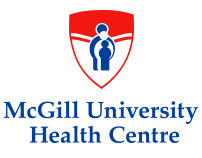预约演示
更新于:2025-05-07
AIDS-Related Complex
艾滋病相关复合征
更新于:2025-05-07
基本信息
别名 AIDS RELATED COMPLEX、AIDS Related Complex、AIDS related complex + [26] |
简介 A prodromal phase of infection with the human immunodeficiency virus (HIV). Laboratory criteria separating AIDS-related complex (ARC) from AIDS include elevated or hyperactive B-cell humoral immune responses, compared to depressed or normal antibody reactivity in AIDS; follicular or mixed hyperplasia in ARC lymph nodes, leading to lymphocyte degeneration and depletion more typical of AIDS; evolving succession of histopathological lesions such as localization of Kaposi's sarcoma, signaling the transition to the full-blown AIDS. |
关联
11
项与 艾滋病相关复合征 相关的药物靶点- |
作用机制 免疫调节剂 |
非在研适应症 |
最高研发阶段批准上市 |
首次获批国家/地区 日本 |
首次获批日期2015-03-26 |
靶点 |
作用机制 RT抑制剂 |
在研机构 |
在研适应症 |
非在研适应症 |
最高研发阶段批准上市 |
首次获批国家/地区 美国 |
首次获批日期1994-06-24 |
靶点 |
作用机制 IFNAR激动剂 [+1] |
原研机构 |
在研适应症 |
非在研适应症 |
最高研发阶段批准上市 |
首次获批国家/地区 美国 |
首次获批日期1993-07-23 |
65
项与 艾滋病相关复合征 相关的临床试验NCT04766944
Incidence and Associated Risk Factors of Augmented Renal Clearance (ARC) in Critically Ill Trauma Patients of 50 Years Old and Above
This single-center prospective cohort study conducted at the adult trauma ICU of the Montreal General Hospital (MGH) affiliated with the McGill University Health Centre (MUHC) aims to determine the incidence and associated risk factors of augmented renal clearance (ARC) in critically ill trauma patients of 50 years old and above.
开始日期2024-03-01 |
NCT05668390
A Multi-national Phase IIIb, Double-blind, Placebo-controlled Trial to Determine the Safety and Efficacy of STALORAL® Birch 300 IR in Children and Adolescents 5 to 17 yo With Birch Pollen-induced Allergic Rhinoconjunctivitis w/o Asthma
Allergic rhinoconjunctivitis due to birch pollen is a seasonal problem which manifests as a combination of nasal symptoms (such as congestion, runny nose, sneezing, itching of the nose) and ocular symptoms (such as red, itchy and watery eyes). For several birch-allergic patients, allergic rhinoconjunctivitis occurs with an oral allergy syndrome.
The purpose of this study is to demonstrate the safety and efficacy of the study drug (STALORAL Birch 300 IR) in children and adolescents with birch pollen-induced allergic rhinoconjunctivitis, with or without asthma, when treated before and during the pollen season.
Approximately 699 children will participate in this study. The study will be conducted worldwide in approximately 80 medical sites in about 12 countries. The total duration of the study will be approximately 20 months.
The purpose of this study is to demonstrate the safety and efficacy of the study drug (STALORAL Birch 300 IR) in children and adolescents with birch pollen-induced allergic rhinoconjunctivitis, with or without asthma, when treated before and during the pollen season.
Approximately 699 children will participate in this study. The study will be conducted worldwide in approximately 80 medical sites in about 12 countries. The total duration of the study will be approximately 20 months.
开始日期2023-11-14 |
申办/合作机构 |
IRCT20231124060158N1
Investigating the immunological effect of rosuvastatin in patients with human immunodeficiency virus (HIV) with adequate virological response and no immunological response
开始日期2019-08-31 |
100 项与 艾滋病相关复合征 相关的临床结果
登录后查看更多信息
100 项与 艾滋病相关复合征 相关的转化医学
登录后查看更多信息
0 项与 艾滋病相关复合征 相关的专利(医药)
登录后查看更多信息
3,584
项与 艾滋病相关复合征 相关的文献(医药)2025-06-01·Parasitology International
Strongyloides stercoralis infection in a patient initiating corticosteroid therapy for hypereosinophilia: A case report
Article
作者: Demirel, Filiz ; Uslu, Ömer ; Dinç, Bedia ; Taylan Özkan, Ayşegül ; Aydoğ, Gülden
2025-06-01·The French Journal of Urology
Safety and effectiveness of external shock wave lithotripsy in emergency: A narrative review
Article
作者: Panthier, Frédéric ; Traxer, Olivier ; Chicaud, Marie ; Kutchukian, Stessy ; Beaujouan, Florent ; Descazeaud, Aurélien
2025-06-01·Nutrition
Efficacy of vitamin D replacement therapy on 28 cases of myalgic encephalomyelitis/chronic fatigue syndrome after COVID-19 vaccination
Article
作者: Fukushima, Masanori ; Fujisawa, Akinori ; Konishi, Nafuko ; Kodama, Shinichiro ; Hirai, Yuriko ; Nakata, Mitsuko ; Teramukai, Satoshi
23
项与 艾滋病相关复合征 相关的新闻(医药)2025-04-23
关注并星标CPHI制药在线4月9日,中国国家药品监督管理局药品审评中心(CDE)官网公示信息显示,美国生物技术公司Arcus Biosciences提交的1类新药casdatifan片的临床试验申请(IND)正式获得受理,为这款在研的HIF-2α抑制剂首次进入中国临床开发阶段,为国内晚期肾细胞癌(RCC)患者带来新的治疗希望。结合Arcus公司近期公布的临床数据,casdatifan展现出的高疾病控制率和安全性优势,不仅可能重塑晚期肾癌的治疗格局,也进一步推动了中国创新药市场与国际研发的接轨。 图源:CDE官网缺氧诱导因子-2α(HIF-2α)是细胞应对低氧环境的核心调控因子,其异常激活与多种实体瘤的发生发展密切相关。在透明细胞肾细胞癌(ccRCC)中,VHL基因突变导致HIF-2α蛋白持续积累,进而驱动血管生成、肿瘤增殖和免疫逃逸;因此,靶向HIF-2α被视为治疗肾癌的关键策略之一。目前全球范围内已上市的HIF-2α抑制剂仅有默沙东的Belzutifan,其于2021年获FDA批准用于VHL综合征相关肾癌,但针对晚期RCC的适应症仍在探索中。这一领域存在显著的临床需求缺口,尤其是对单药或联合治疗耐受性更优、疗效更持久的药物需求迫切。Casdatifan作为第二代HIF-2α抑制剂,其分子结构经过优化,旨在提高对HIF-2α的特异性结合能力,减少脱靶效应。临床前研究显示,casdatifan在抑制HIF-2α二聚化及下游基因(如VEGF、EPO等)表达方面较现有药物更具效力。Arcus公司采用差异化开发策略,重点关注药物在晚期RCC中的单药及与PD-1抑制剂的联用潜力,这与其管线中已布局的zimberelimab(抗PD-1单抗)形成协同效应。Arcus公司于2024年第一季度公布的ARC-20临床1/1b期试验最新数据,为casdatifan的潜力提供了有力佐证。该研究纳入的晚期RCC患者群体覆盖了既往接受过免疫检查点抑制剂和抗血管生成治疗的多线治疗失败者,具有较高的临床代表性。数据显示,在每日一次口服的3个剂量组(50mg、100mg、150mg)中,casdatifan的疾病控制率(DCR)分别达到81%、86%和85%,且部分患者出现肿瘤缩小(未披露具体客观缓解率)。这一结果显著优于Belzutifan在类似患者群体中报告的约70%的DCR,提示casdatifan可能具备更广泛的适用人群和更深的抗肿瘤活性。在安全性方面,HIF-2α抑制剂的主要毒性源于其对红细胞生成素(EPO)的抑制,可能导致贫血。然而,ARC-20试验中仅报告了低级别(1-2级)贫血事件,发生率不足20%,且未出现因贫血导致的治疗中断。相比之下,Belzutifan的3级及以上贫血发生率为7%-10%,需通过剂量调整或输血管理。casdatifan的耐受性优势可能与其更精准的靶点结合特性相关,这也为其后续与免疫治疗的联合使用奠定了基础。此次casdatifan在华IND获批受理,反映了跨国药企对中国创新药市场的重视。中国每年新增肾癌病例约7.5万例,其中约30%在确诊时已处于晚期,且一线治疗后的耐药问题突出;尽管PD-1抑制剂联合抗血管生成药物已成为标准疗法,但二线及后线治疗选择有限,临床亟需新型靶向药物。若casdatifan能在中国复现其全球临床试验的疗效数据,有望快速填补这一空白。加之中国药监部门近年来对创新药的审评审批持续提速。2023年CDE发布的《单臂临床试验用于支持抗肿瘤药上市申请的适用性技术指导原则》明确支持基于单臂试验数据加速批准突破性疗法,这为casdatifan后续若在关键试验中取得阳性结果提供了政策利好。从竞争格局看,国内已有正大天晴、恒瑞医药等企业布局HIF-2α抑制剂,但均处于早期临床阶段。Casdatifan凭借先发优势和强劲数据,或能在中国市场建立竞争壁垒。不过,跨国药企在华开发也面临本土化挑战,包括与国内PI(主要研究者)的合作深度、患者入组速度、以及医保谈判压力等。Arcus公司可能需要通过授权合作(如与本土企业共同开发)来优化资源配置。尽管casdatifan当前数据亮眼,其真正价值仍需更大规模临床试验验证。ARC-20试验样本量较小(约120例),且随访时间较短,长期生存获益(如中位无进展生存期、总生存期)尚未明确。HIF-2α抑制剂的疗效可能受肿瘤异质性影响,如何通过生物标志物筛选最佳获益人群是未来研究重点。Arcus公司计划启动的II期试验将纳入PD-L1表达、基因突变谱等分层因素,这一设计有望提升临床开发效率。另一个关键问题是联合治疗方案的探索。临床前研究表明,HIF-2α抑制剂可通过调节肿瘤微环境增强PD-1抑制剂的疗效。Arcus公司已启动casdatifan联合zimberelimab的Ib期研究,初步数据显示联合组的DCR提升至90%以上,且未出现叠加毒性。这种"内部联用"策略不仅提高疗效,也强化了公司管线产品的协同价值。但该组合需面对默沙东"Belzutifan+Keytruda"、百济神州"sitravatinib+替雷利珠单抗"等竞争方案的直接挑战。Casdatifan的开发历程为全球创新药研发提供了多重启示。其一,针对成熟靶点的迭代优化(如提升选择性、改善药代动力学)仍能创造显著临床价值,这不同于业界对"全新靶点"的过度追捧。其二,跨国药企与中国监管机构的早期沟通(如pre-IND会议)显著缩短了开发时间差,casdatifan的中美临床申请间隔仅6个月,体现中国加入ICH后的国际接轨成效。其三,生物技术公司通过聚焦特定疾病领域(如Arcus专注肿瘤免疫治疗),构建具有协同效应的产品矩阵,可在降低研发风险的同时提升投资吸引力。对于中国创新药生态而言,casdatifan的引入具有双重意义:一方面,加速了国内患者获取全球前沿疗法的进程;另一方面,其开发过程中产生的高质量临床数据(如中国人群特异性反应)将反哺全球研发。该项目可能带动国内HIF通路研究热度,促进相关诊断试剂、联合治疗方案等配套产业链的发展。参考文献: [1]CDE官网[2]Choueiri, Toni K., et al. "Casdatifan (Cas) monotherapy in patients (pts) with previously treated clear cell renal cell carcinoma (ccRCC): Safety, efficacy and subgroup analysis across multiple doses from ARC-20, a phase 1 open-label study." (2025): 441-441.END【企业推荐】领取CPHI & PMEC China 2025展会门票来源:CPHI制药在线声明:本文仅代表作者观点,并不代表制药在线立场。本网站内容仅出于传递更多信息之目的。如需转载,请务必注明文章来源和作者。投稿邮箱:Kelly.Xiao@imsinoexpo.com▼更多制药资讯,请关注CPHI制药在线▼点击阅读原文,进入智药研习社~
临床申请申请上市临床研究
2025-02-15
编者按:VHL-HIF轴是ccRCC中最常见的激活通路之一,VHL失活会导致HIF1α和HIF2α的稳定表达。随着HIF-2α抑制剂(包括贝组替凡、casdatifan等)的发展,ccRCC领域出现了新的治疗方案。在今年的ASCO GU大会上,丹娜—法伯癌症研究所Toni Choueiri教授分享了casdatifan的1期研究结果,本刊特别总结,以飨读者。
亮点抢先看:
正在进行的1期ARC-20研究数据显示,缺氧诱导因子2α(HIF-2α)抑制剂casdatifan单药治疗透明细胞肾细胞癌(ccRCC)患者具有良好的临床活性,毒副作用可控并且大多可预期,例如贫血和缺氧。
这项研究纳入了既往经过抗PD-(L)1单抗和VEGFR-酪氨酸激酶抑制剂治疗的患者,接受casdatifan单药治疗(5个剂量递增组和4个剂量扩展组),试验终点包括治疗中出现的不良事件(TEAE)发生率和客观缓解率。
未来的研究将探索casdatifan用于前线治疗的疗效,并将在关键3期试验中评估这种新型药物。
正在进行的1期ACR-20临床试验结果表明,HIF-2α抑制剂casdatifan单药疗法在经治的ccRCC患者表现出良好的临床活性。
“患者对casdatifan耐受,”研究首席专家、丹娜—法伯癌症研究所的医学博士Toni Choueiri谈到,“毒性可控,尤其是‘靶标’毒性,如贫血和缺氧。它还表现出临床活性,几名患者获得了持久缓解。”
ccRCC是肾癌中的最常见组织学亚型,目前的治疗方案包括针对PD-1、CTLA-4和VEGF的免疫联合方案。然而,ccRCC也普遍与von Hippel-Lindau通路失调有关,这会导致HIF-2α过度表达以及致癌基因过度活跃。因而引发了针对HIF-2α的治疗策略,例如贝组替凡,2021年8月,其凭借II期临床数据获FDA加速批准用于治疗无需立即手术的VHL相关的肾细胞癌、中枢神经系统血管母细胞瘤或胰腺神经内分泌瘤患者,成为全球首款也是目前唯一一款获批上市的HIF-2α抑制剂。2023年12月,贝组替凡再获FDA批准用于治疗接受过PD-(L)1药物和抗VEGF药物治疗的晚期肾细胞癌(RCC)患者。
Casdatifan是一种新型口服药物,可阻断HIF-2α依赖性基因的转录。“它实际上是一种HIF-2⍺的小分子抑制剂,在肾细胞癌异种移植模型中表现出良好的抗肿瘤活性,”Choueiri教授指出。
正在进行的ARC-20试验包括18岁及以上的ccRCC患者,既往未使用过HIF-2α抑制剂,曾接受过抗PD-(L)1和VEGFR-酪氨酸激酶抑制剂治疗。其中33名患者接受每天2次的50 mg casdatifan,31名患者接受每天1次的50 mg casdatifan,两组中位随访期分别为11个月和8个月。两组均未出现4级TEAE;而对于3级TEAE,两组分别为42%和36%。最常见的TEAE是贫血,36%的患者都会出现贫血,两组出现缺氧的比例分别为9%和6%。此外,casdatifan每日2次组的确认客观缓解率25%,每日1次组的确认客观缓解率为21%。
“我们正在计划的一项试验是PEAK-1,这将是一项随机3期试验,将casdatifan与卡博替尼联合使用,或卡博替尼单药治疗转移性ccRCC,这些患者在免疫治疗后出现进展,”Choueiri教授表示。
▌参考文献:
[1] Toni K. Choueiri, Jae Lyun Lee, Jaime R. Merchan, et al. Casdatifan (Cas) monotherapy in patients (pts) with previously treated clear cell renal cell carcinoma (ccRCC): Safety, efficacy and subgroup analysis across multiple doses from ARC-20, a phase 1 open-label study. ASCO GU 2025. 441
[2] U.S. Food and Drug Administration. FDA approves belzutifan for advanced renal cell carcinoma. Published December 14, 2023. Accessed January 15, 2025.
Toni Choueiri教授
丹娜—法伯癌症研究所
Toni K. Choueiri教授是丹娜—法伯癌症研究所(DFCI)兰克泌尿生殖系统肿瘤中心主任、丹娜—法伯/哈佛癌症中心肾癌项目联合负责人、哈佛医学院Jerome and Nancy Kohlberg主席兼医学教授。他是丹娜—法伯国际战略计划医学总监,曾任DFCI医务人员主席(2016-2018年)。
2013年,Choueiri教授荣获DFCI颁发的George Canellos临床研究和患者护理卓越奖,2016年荣获肾癌协会(KCA)颁发的Eugene Schonfeld奖,并入选2021年癌症护理巨人奖。Choueiri教授是美国国家综合癌症网络(NCCN)肾癌小组、KidneyCan董事会、美国国家癌症研究所(NCI)GU指导委员会成员,曾担任KCA医学和科学指导委员会主席(2015-2018)。Choueiri教授是多个国家和国际GU I-III期试验的首席研究员。
(来源:《肿瘤瞭望-泌尿时讯》编辑部)
声 明
凡署名原创的文章版权属《肿瘤瞭望》所有,欢迎分享、转载。本文仅供医疗卫生专业人士了解最新医药资讯参考使用,不代表本平台观点。该等信息不能以任何方式取代专业的医疗指导,也不应被视为诊疗建议,如果该信息被用于资讯以外的目的,本站及作者不承担相关责任。
ASCO会议临床结果临床3期临床2期加速审批
2024-11-07
·药融圈
生物偶联药物(XDC)近年显示出巨大潜力。XDC药物的应用前景广阔,除了肿瘤之外,这类药物还有望给心血管疾病、糖尿病、自身免疫性疾病以及罕见病等患者带来新的治疗选择。
XDC药物的“公式”:靶向肿瘤的载体(Carrier)+二者的连接子(Linker)+诱导多种生物学功能的载荷(Payload)。
本文涉及到的XDC有:
抗体偶联药物(ADC)
多肽偶联药物(PDC)
抗体片段偶联药物(FDC)
放射性核素偶联药物(RDC)
小分子偶联药物(SMDC)
抗体寡核苷酸偶联物(AOC)
免疫刺激抗体偶联药物(ISAC)
病毒样药物偶联物(VDC)
抗体-siRNA偶联物(ARC)
前抗体偶联药物(Pro-ADC)
核酸适体药物偶联物(ApDC)
双环肽放射性偶联药物(BRC)
抗体生物聚合物偶联物(ABC)
降解剂-抗体偶联物(DAC)
Centyrin-siRNA药物
1
抗体偶联药物(ADC)
ADC药物是近年的大热点,自2000年首款药物获批以来,全球已有15款ADC产品获批上市。其中,Enhertu以25.66亿美元的销售额成为2023年最畅销的ADC药物。2023年全球ADC药物市场规模首次突破百亿美元大关。根据Nature Reviews Drug Discovery杂志文章预测到2028年,全球ADC药物收入规模将达260亿美元。当前全球ADC管线庞大,有超1000个ADC项目,其中400余款ADC分子活跃在临床试验的各个阶段。
ADC药物未来趋势:
1.通过核心三组件整体技术角度对ADC药物进行优化来解决不良反应、响应率有限以及耐药发生快等问题。
2.ADC药物多疗法联合给药探索带来更优的临床获益。
3.ADC药物从当前狂热期到平稳期的过渡,更好的差异化是未来的重点。
4.肿瘤不再是ADC药物的唯一战场,更多药企开始探索将ADC药物应用于非肿瘤适应症。
2
多肽偶联药物(PDC)
PDC通过将细胞毒性药物连接到特定多肽上,实现对肿瘤细胞的精准打击。PDC的核心组成部分包括细胞靶向肽、连接链(linker)和有效载荷(payload),即细胞毒素。
PDC structure illustration
与上文提到的ADC药物相比,PDC药物分子量更小。多肽类药物分子量介于小分子药物(<500 Da)和生物制品(>5000 Da)之间,这使它更易穿透肿瘤基质进入到肿瘤细胞当中。而分子量在160KDa的ADC药物会更难进入到肿瘤细胞内部。由于结构和成分都更加简单,PDC会有更低的免疫原性,即不太会刺激机体发生免疫应激反应。PD可通过修饰肽链的氨基酸序列,改变共轭疏水性和电离性质,解决水溶性差、代谢不及时等问题。PDC能够快速被肾脏消除,使其对骨髓和肝脏的毒性更低。
PDC 相较单抗,多肽更易合成与纯化,这就使得PDC药物在生产、运输和储存上的成本都要更低。
目前,全球已有两款PDC药物获批上市,分别是诺华公司开发的Lutathera和Oncopeptipes公司开发的Pepaxto。Lutathera是一种肽受体放射性核素治疗药物,用于治疗胃肠胰腺神经内分泌肿瘤(GEP-NETs),而Pepaxto则是一种靶向氨肽酶类的PDC药物,用于复发/难治性多发性骨髓瘤(RRMM)的治疗。在PDC项目上全球大约有16款进入临床阶段的药物,比较领先的且活跃的多为海外公司。
PDC药物未来趋势:
1.随着多肽设计技术提升,PDC药物循环稳定性差的难题逐渐被解决。
2.PDC 药物应用范围不仅应用于癌症治疗,还可以应用于免疫调节、神经科学和代谢疾病等领域。
3.内卷时代,PDC整体市场仍处于发展早期,PDC药物将是中国XDC开发企业的差异化选择之一。
3
抗体片段偶联药物(FDC)
抗体片段偶联药物(Fc偶联药物,FDC),就是使用更小的抗体片段(单链scFv)替换更大的抗体分子。由于抗体片段分子量小,所以FDC的肿瘤穿透性较好。FDC的半衰期短,减少其在正常组织中的暴露,更好地安全性。可系统性地分析、改进抗体片段和毒素之间的连接物。
据不完全统计,目前全球有8款在研药物。Antikor Biopharma这家英国公司建立了抗体片段偶联药物(FDC)技术。它可以克服ADC的局限性,用来治疗难治型实体瘤。由于分子更小,FDC对实体瘤的穿透力强于ADC。又由于FDC的生物半衰期短于ADC,药物的毒副作用可得到更好的控制。其公司靶向HER2的ANT-043展现出良好的肿瘤杀伤和毒理耐受效果。与以Herceptin为基础的ADC药物相比较,ANT-043具有更强的肿瘤渗透力和更灵活的PK特性。根据ANT-043的临床前数据,Antikor将其靶向市场定位为HER2低表达的癌症,比如某些乳腺癌。作为下一代癌症治疗方法,FDC可以克服现有治疗选择的诸多局限性,具有极大的市场潜力,预计未来市场规模将超过180亿美元。
FDC药物未来趋势:
通过改变连接物的化学结构和长短,以及在偶联药物上添加PEG聚合物,可以精准调控FDC的毒素/抗体片段负载比例(DAR)、成药性、药效和安全性。
4
放射性核素偶联药物(RDC)
RDC主要由靶向定位元件(抗体或小分子)、连接臂、螯合物和放射性同位素四个部分构成。根据靶向配体的不同,RDC可细分为抗体偶联核素药物(ARC)、小分子偶联核素药物和多肽偶联核素药物(PRC)。RDC发挥药效主要依赖物理辐射,因此不易产生耐药。从靶点上看,RDC药物以靶向前列腺特异性膜抗原(PSMA)的项目居多,同时也涉及在ADC药物中较受欢迎的Her2靶标,在适应症上,RDC药物主要集中在肿瘤领域。目前,全球已上市的RDC治疗药物表现突出的主要为Lutathera和Pluvicto两款。
RDC药物未来趋势:
诊疗一体化平台是RDC发展的大趋势,理想靶点越来越多,供应链一体化越来越完善。
5
小分子偶联药物(SMDC)
SMDC小分子靶向配体、连接基和细胞毒分子(有效载荷)三个部分构成。其和ADC最大的区别在于靶向配体部分,ADC药物的配体是大分子抗体, 与抗原结合,而SMDC的配体是与转运蛋白高选择性结合,是分子量比较小的一个有机官能团。SMDC在实体瘤中,SMDC具有很好的细胞穿透性以及良好的体外和体内稳定性。据不完全统计,目前在研的SMDC管线约30个。
SMDC药物未来趋势:
最难的配体选择有很多突破,SMDC探索性管线越来越多,靶点呈现多样性,越来越多企业尝试布局该赛道。
6
抗体寡核苷酸偶联物(AOC)
AOC是一类寡核苷酸与抗体共价连接而形成的寡核苷酸分子复合物。AOC通常有三个部分组成:靶向靶点的单抗、寡核苷酸药物载荷,以及连接子。它通过将寡核苷酸与特异性抗体通过化学键连接在一起,形成了一种能够精确靶向并调控基因表达的疗法。
AOC已经逐渐展现出了取代纳米颗粒作为递送寡核苷酸药物载体的趋势。AOC最初作为诊断工具得到应用,但最近逐渐发展为许多疾病的靶向治疗方法。随着寡核苷酸领域的成熟和选择性组织递送成为临床应用的重要挑战,AOC转变为潜在的单药疗法。AOC多采用半胱氨酸、赖氨酸、定点偶联技术等有其明显的特点和优势。比如寡核苷酸具有较好的亲水性,在偶联过程中可以少用有机试剂或者不用有机试剂。
目前全球开发AOC药物的企业有Avidity、Tallac Therapeutics、Dyne Therapeutics、Denali Therapeutics和Gennao Bio。这些公司开发的AOC项目面向的适应证涵盖肌肉疾病、中枢神经系统疾病和癌症。
AOC药物未来趋势:
调节基因表达的能力开启了个性化医疗的潜力,发展前景广阔。不同的偶联策略成熟,包括可剪切的连接子和非剪切的连接子,以适应不同的治疗需求。AOC会与其他治疗手段(如化疗、放疗、免疫疗法等)联合使用,大大提高治疗效果。
7
免疫刺激抗体偶联药物(ISAC)
免疫刺激抗体偶联物(Immunostimulatory
antibody conjugates, ISAC)其设计策略与ADC类似,区别在于它将ADC中的药物载荷部分替换为免疫激动剂,以增强免疫反应。这些免疫激动剂的核心功能在于提升免疫系统的响应力,进而有效提高免疫系统对肿瘤细胞的攻击和清除能力。与ADC结构类似,同样由三个主要成分组成:肿瘤靶向抗体、连接子和特异性免疫调节剂。ISAC既能激活固有免疫,又能刺激适应性免疫,具有清除肿瘤细胞的双重治疗作用。同时与肿瘤微环境激活偶联药物(TMAC)部分功能相似,都是通过调剂免疫刺激和微环境,实现激活免疫杀伤和治疗敏感的作用。
从当前看IgG1是ISAC中使用的主要抗体。ISAC目前使用的载荷多为TLR7、TLR8、TLR9激动剂或STING激动剂。
ISAC药物未来趋势:
更强大的数据收集和AI建立肿瘤微环境模型,更好的模拟和预测,能更加优效的进行ISAC设计,能克服其毒性、免疫原性、药代动力学方面的挑战。其中免疫激动剂或调节剂作为新型载荷能有突破性进展。
8
病毒样药物偶联物(VDC)
VDC(Virus-like
Drug Conjugate,VDC)是采用将病毒衣壳设计为非感染性蛋白质纳米颗粒(病毒样颗粒,VLP)作为高效递送载体的偶联药物形式。VDC 具有双重作用机制,首先可导致肿瘤细胞的急性坏死,然后通过创建高免疫原性环境来诱导抗肿瘤特异性免疫反应,从而实现更强大和持久的治疗。
2022年3月21日,欧盟授予其首个病毒样药物偶联物(VDC)候选产品AU-011孤儿药资格,用于治疗葡萄膜黑色素瘤。AU-011是一种病毒样药物偶联物(VDC)疗法,由纳米病毒颗粒(病毒样颗粒,VLP)与一种红外光激活的强效细胞毒性药物偶联而成。这种设计之下,药物的靶向端可选择性地附着在修饰的硫酸乙酰肝素蛋白聚糖(HSPG)表面,实现对实体肿瘤细胞的靶向与结合,偶联的红外光激活细胞毒药物被激活后,就能破坏肿瘤细胞,导致肿瘤细胞急性坏死的同时,激活免疫系统产生抗肿瘤应答。
VDC药物未来趋势:
VDC结构复杂,目前整体生物学确定性和技术发展都处于早期。但未来会在眼科和泌尿科的肿瘤中发挥更多作用。
9
抗体-siRNA偶联物(ARC)
抗体-siRNA偶联物(ARC)是一类新型大分子,由单克隆抗体和siRNA组成,利用抗体和细胞膜受体之间的特异性相互作用,可将siRNA递送到靶细胞中。siRNAs是一类属于小分子非编码核糖核酸家族的药物,分子量约为13kDa,通过碱基配对将RNA诱导的沉默复合体(RISC)招募到mRNA上,从而靶向和沉默癌基因、抑癌基因和其他调控基因的表达。
ARC药物未来趋势:
越来越多的间接激活方式使用到其中,肿瘤细胞的内吞效率、抗体偶联的siRNA数目、抗体与siRNA的中间连接子选择以及内吞后的ARC在细胞内从内涵体或溶酶体中释放的效率都更好的优化。同时拓展更多的遗传性疾病适应症。
10
前抗体偶联药物(Pro-ADC)
Pro-ADC是一种新型的药物形式,其原理是利用抗体将细胞毒性药物前药化,并精准输送至肿瘤细胞中发挥作用。这种药物通过抗体与肿瘤细胞表面的特异性抗原结合,将药物前药化并靶向肿瘤细胞,从而实现对肿瘤细胞的高效杀伤。最早由CytomX Therapeutics于2013年公开提出,前抗体药物(Probody)来源于prodrug(前药)+antibody(抗体),指在初始状态下不发挥功能,只有在经过生物体内经化学反应或酶作用转化后,才具备活性的药物。
a,包含卷曲螺旋肽(例如靶向 CD19、整合素 αVβ6 或 CD3 的肽段,均处于临床前开发阶段)或具有蛋白酶可裂解接头的亲和结合肽(例如 praluzatamab ravtansine,一种靶向 CD166 的 PDC 和 CX-2029,一种靶向 CD71 的 PDC,两者均在早期试验中进行测试)的前体-药物偶联物 (PDC) 的示意图。两种类型的掩蔽部分都会阻断 Fab 内的表位结合区域,从而抑制偶联物与其在非恶性组织上的靶受体的结合。在肿瘤微环境 (TME) 中,肿瘤相关蛋白酶降解间隔区,从而激活 Fab 部分并促进特定的肿瘤细胞靶向。b,响应pH值变化或带负电荷的离子浓度的PDC。对于pH依赖性PDC,失活的Fab区域内的组氨酸残基在弱酸性TME中变得质子化,但在生理条件下保持未质子化,通过构象变化促使抗原结合。对于使用蛋白质相关化学开关 (PaCS) 的 PDC,Fab 区域和抗原表位在与生理 pH 值相关的浓度下被带负电荷的离子(如氯化物、碳酸氢盐和硫化物)失活(阻断)。由于其中一些离子被中和,这些部分暴露在TME中,从而重新激活靶标结合。
采取这种设计的前抗体药物可以重启以前由于毒性而无法实现的新组合,创造或扩大治疗窗口,药物选择的靶点可以存在于健康组织中,从而扩大了“不可成药”的药物目标范围。
Pro-ADC药物未来趋势:
更精妙的酶激活系统研究设计,可以特异性地激活Pro-ADC;利用光敏剂和光照射激活Pro-ADC,可以实现对药物释放的精确控制;一些Pro-ADC设计为在肿瘤微环境的低pH条件下激活,因为肿瘤组织通常比正常组织酸性更强。
11
核酸适体药物偶联物(ApDC)
ApDC(Aptamer−Drug
Conjugates,)就是把ADC其中的抗体换成适配体(Apdamer),而适配体作为识别配体,指导治疗药物靶向疾病部位或调节靶向生物标志物的生物学功能。核酸适配体是利用基于活细胞的指数富集配基系统进化技术筛选得到的寡核苷酸序列,序列长度大多在15-60碱基之间。核酸适配体有“化学抗体”之称,因其与靶标物质的结合能力可与抗体媲美。
ApDCs作用靶点丰富,因为DNA/RNA序列和结构的多样性非常高,理论上SELEX技术可以针对几乎所有目标选择适配体,能够匹配的靶点比抗体药多很多。ApDC的载药位置、载药数量精确可控,质量控制简单,且可实现协同治疗。ApDC的肿瘤靶向迅速,对实体瘤的穿透能力强。核酸在人体内大量存在,所以它的免疫原性相对比较低。
ApDC药物未来趋势:
ApDC未来能够通过技术升级,从而显著延长血液半衰期。借鉴反义核酸和小干扰核酸药物多年研发积累,未来特异性强、分子靶点明确的核酸适体药物将会陆续研制成功。
12
双环肽放射性偶联药物(BRC)
即通过Linker将放射核素与双环肽分子连接。双环肽分子集抗体、小分子药物及肽类的特性于一身,具有与抗体类似的亲和性和精确的靶向特异性;同时,由于它们分子量较小,使得其能够快速深入地渗透组织,从而实现从组织内部靶向病灶;其肽类的性质则提供了“可调控”的药物动力学半衰期和肾脏清除途径,从而避免了其他药物形式中常见的肝脏和胃肠道毒性。放射性配体疗法是诺华公司着重开发的创新治疗模式之一。它通过将放射性元素与靶向肿瘤特异性蛋白的配体连接在一起,在靶向杀伤肿瘤细胞的同时,降低对健康组织的损伤。
BRC药物未来趋势:
因为双环肽分子集抗体、小分子药物及肽类的优势于一身,非常有望成为下一代肿瘤疗法的黑马。越来越多的MNC布局BRC。
13
Centyrin-siRNA药物
Centyrin是一种小型高度稳定的蛋白质,能以很高的特异性和亲和力结合目标抗原,从早期内体到溶酶体的各种pH条件下均能稳定。Centyrin蛋白有着很多独特的特性,包括优异的稳定性和溶解度、包括体积较小、可大肠杆菌生产,免疫原性较低,化学偶联方法与生产方式相对比较简单等,这让它们特别适合靶向递送寡核苷酸。
FDA授予ABX1100儿科罕见病资格认定(RPD),ABX1100是一种靶向肌肉中Gys1基因的研究性Centyrin-siRNA偶联物,用于治疗庞贝病。庞贝病是一种罕见致命性疾病,可在任何年龄发病,包括婴儿期。其特点是随着时间的推移进展为衰弱性肌无力,该病由负责分解肌肉细胞糖原的酸性α-葡萄糖苷酶突变引起的。ABX1100是一种治疗庞贝病的新方法,旨在减少肌肉中糖原的积累。
Centyrin-siRNA药物未来趋势:
Centyrins抗原结合区的改造使其具有更多靶细胞结合的可能性,未来作用不可估量,但目前仍任重而道远。
14
抗体生物聚合物偶联物(ABC)
抗体生物聚合物偶联物(Antibody-biologic conjugates,ABC),将二药或者多药合一,从而降低成本,也可降低相关副作用,双特异性抗体(可理解为A抗体偶联B抗体),抗体偶联蛋白药物是其中常见的两类ABC。
ABC药物未来趋势:
ABC除蛋白类药物,核酸药物外,现在生物酶也开始进行抗体偶联,未来ABC可能会扩展到更大的应用范围。
15
降解剂-抗体偶联物(DAC)
DAC是由PROTAC和抗体偶联而成,目前PROTAC药物由三部分构成,包括目标蛋白结合物、泛素连接酶配体和连接子。但PROTAC通常面临细胞摄取差和生物利用度低的问题,在健康细胞和癌细胞之间缺乏区分可能会引发脱靶毒性,而DAC模式的出现为PROTAC药物提供了新的思路。
DAC药物未来的趋势:
DAC药物虽处于发展的早期阶段,未来发展的要点有:扩展抗体靶点和结构;明确设计参数;拓展到分子胶和bioPROTAC;还可用于疾病检测、疾病机制探索和可控治疗。
最全!15种XDC药物全类型梳理及发展趋势预测
作者 | Yang
审核编辑 | Dr. Tuu
▎2024国际药物研发论坛推荐
瞄准全球最前沿的创新技术,由中关村生命科学园发起的2024国际药物研发论坛将于11月22日在北京召开,聚焦创新药物研发和可持续发展,围绕细胞与基因治疗药物研发及产业化、靶向肿瘤药物的研究进展探讨如何整合各方资源,在新技术上、新靶标、新机制、新化合物等方面寻求突破,打通“基础研究-新药创制-成果转化”三大环节之间的壁垒,努力建设新药创制生态圈,推动我国新药创制事业的源头创新、持续创新和循环创新。
本次论坛邀请了来自中国、英国、日本、瑞士、美国的顶尖基础研究及药物研发领域的科学家,包括罗敏敏教授,Adil Mardinoglu 教授,Shuai Ke教授,Minoru Takasato教授,Maya Zhang博士,Bernd Wollscheid教授,王军研究员等国内外知名专家出席,针对创新药物新技术研究,细胞基因疗法开发,靶向肿瘤药物研究带来最前沿的分享。
*议程以现场实际为准
扫码报名国际峰会,了解最新源头创新
2023年国际药物研发论坛往期回顾:
抗体药物偶联物多肽偶联药物上市批准siRNA临床结果
分析
对领域进行一次全面的分析。
登录
或

生物医药百科问答
全新生物医药AI Agent 覆盖科研全链路,让突破性发现快人一步
立即开始免费试用!
智慧芽新药情报库是智慧芽专为生命科学人士构建的基于AI的创新药情报平台,助您全方位提升您的研发与决策效率。
立即开始数据试用!
智慧芽新药库数据也通过智慧芽数据服务平台,以API或者数据包形式对外开放,助您更加充分利用智慧芽新药情报信息。
生物序列数据库
生物药研发创新
免费使用
化学结构数据库
小分子化药研发创新
免费使用





